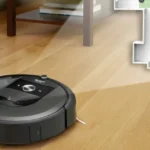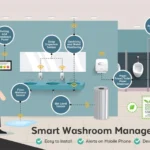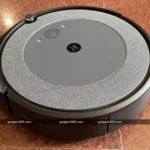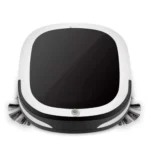Have you ever encountered issues with your smart vacuum cleaner’s camera mapping? It can be perplexing to see your device moving aimlessly without properly navigating around the room. In this comprehensive guide, we will walk you through everything you need to know about troubleshooting camera mapping issues in smart vacuum cleaners. From understanding what camera mapping is and how it helps your device navigate, to identifying common issues, and providing step-by-step solutions, we’ve got you covered. So sit back, relax, and let’s dive into the world of smart vacuum cleaner troubleshooting.
What is camera mapping?
Camera mapping refers to the process of using a camera to create a detailed map of a room or an area that smart vacuums use to navigate themselves. When a smart vacuum cleaner starts to clean a room, it utilizes its built-in camera to capture a visual representation of the environment around it. This visual representation is then transformed into a digital map that the device then uses to navigate the room.
The camera picks up visual cues like furniture, corners, and walls and then uses its algorithm to create a detailed map of the room. The map is used to allow the smart vacuum cleaner to navigate around obstacles and effectively clean large areas without collisions. The camera technology used in smart vacuums typically has a wide field of view that enables it to capture a large section of the environment without the need for manual intervention.
One advantage of using camera mapping technology is that smart vacuums can clean a room more efficiently, saving time and energy. Even if someone moves furniture or objects around the room, the smart vacuum can adjust to any changes in the environment.
Understanding camera mapping technology is vital as it enables users to troubleshoot common issues that may impede the functioning of a smart vacuum cleaner. Problems associated with camera mapping are bound to arise but knowing how to solve them is essential. Troubleshooting the camera mapping issues in smart vacuums can be a series of simple steps that can ensure that the device is up and running again quickly.
How does camera mapping help smart vacuums navigate?
Smart vacuum cleaners have revolutionized the way we clean our houses. They are equipped with smart technologies that help them navigate around the house and clean efficiently. One such technology is camera mapping.
Camera mapping is a feature that helps smart vacuum cleaners navigate around the house with ease. A camera is placed on the vacuum cleaner which captures images of the walls, obstacles, and objects in the room. This 2D image is converted into a 3D map, which the smart vacuum cleaner uses to move around and clean efficiently.
The 3D map created by camera mapping helps the vacuum cleaner to identify different surfaces and adjust its cleaning brush accordingly. For instance, if a smart vacuum cleaner is moving from a carpeted area to a hardwood floor, the camera mapping feature will help it adjust the brush according to the surface. It will also help the vacuum cleaner to navigate around furniture, corners, and tight spaces.
The camera mapping feature helps the smart vacuum cleaner to create a cleaning path. The 3D map created by camera mapping allows the vacuum cleaner to identify areas that have already been cleaned, thus ensuring that it does not pass over the same areas multiple times but instead covers all of the areas that need cleaning.
Although camera mapping can be a helpful tool for smart vacuums, it can sometimes encounter various issues that can hinder the vacuum cleaner’s navigation and cleaning performance. In the following sections, we will discuss some common issues related to camera mapping and how to troubleshoot them effectively.
If you want to learn more about camera mapping, you can check out our article on ‘What is Camera Mapping in Smart Vacuum?‘ or ‘Top 5 Smart Vacuums with Camera Mapping‘.
Common issues with camera mapping
Camera mapping plays a significant role in the navigation of smart vacuum cleaners. However, there are a number of common issues that can arise during the camera mapping process, preventing the vacuum cleaner from following its path efficiently. One of the most important things to keep in mind is that these issues can have various causes, but some of the most common factors include dirty or smudged camera lenses, inadequate lighting, and improper positioning.
One of the most frequently encountered issues is a dirty camera lens, which can affect the accuracy of the mapping process. If the lens is smudged or covered with dirt or dust, the vacuum cleaner may have difficulty capturing clear images of the room, making it challenging for it to navigate effectively. In some cases, this can cause the cleaner to miss areas altogether, or it may repeatedly run into obstacles that it cannot see.
Another potential problem with camera mapping is inadequate lighting. Poor lighting conditions can make it difficult for the camera to capture detailed and accurate images of the room. In dimly lit environments, the camera may not be able to detect small variations in texture or color, which can make it challenging for the vacuum cleaner to differentiate between different surfaces.
Improper positioning of the vacuum cleaner is yet another common issue when it comes to camera mapping. The cleaner should be located in an open area with a clear view of the room, and there should not be any objects blocking the camera’s view. If the vacuum is positioned poorly, it may not be able to capture an accurate representation of the room, which can lead to problems with routing and pathfinding.
Other issues that can arise during the camera mapping process include the need for a firmware update or incorrect settings. Sometimes, the firmware powering the vacuum cleaner can have bugs or glitches that can cause issues with mapping. By performing regular firmware updates, the vacuum cleaner can stay up-to-date and continue to function effectively.
In the next section of this article, we’ll discuss some of the steps you can take to troubleshoot camera mapping issues in detail. By following these steps, you can identify and address any issues that may be preventing your smart vacuum cleaner from mapping your home effectively. Whether you’re dealing with a basic or more complex issue, there are a variety of different strategies you can use to get your vacuum cleaner back on track.
Step-by-Step Troubleshooting Guide
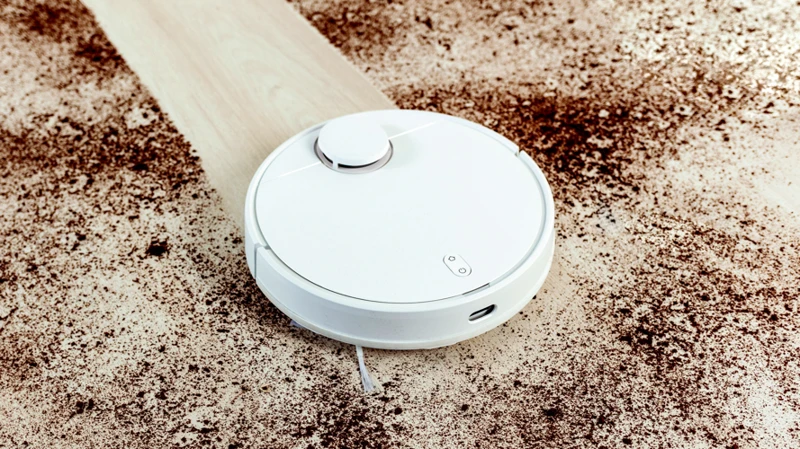
Step 1: Check the Camera Lens
The first step in troubleshooting camera mapping issues with smart vacuum cleaners is to check the camera lens. The lens may be dirty, obstructed, or damaged. Inspect the lens for any visual debris or smudges that might interfere with the camera’s ability to receive information. Additionally, check that the camera is not blocked by any physical objects.
If the lens is dirty, move to the next step for cleaning. If the lens is obstructed, remove all objects and test to see if the issue persists. If the lens is damaged, consider replacing it or contacting the manufacturer for assistance.
Step 2: Clean the Camera Lens
Cleaning the camera lens is a simple but important task in troubleshooting camera mapping issues. Use a microfiber cloth to remove any smudges or dirt on the lens. Avoid using harsh chemicals on the lens, as this can damage the camera. Cleaning the lens should be done regularly to ensure maximum performance of the camera mapping feature.
Step 3: Ensure Adequate Lighting
Low light conditions can cause problems with camera mapping. Make sure the room is well-lit and the lighting is adequate for the camera to function properly. If the room is too dark, add additional lighting or move the smart vacuum cleaner to a space with better lighting conditions.
Step 4: Check the Positioning of the Smart Vacuum Cleaner
The position of the smart vacuum cleaner can also affect camera mapping. Ensure that the cleaner is positioned in a way that provides a clear view of the room. Move the cleaner to a different location if necessary, or adjust its orientation to achieve a better view of the space.
Step 5: Restart the Smart Vacuum Cleaner
Sometimes a simple solution to camera mapping issues is to restart the smart vacuum cleaner. Power off the cleaner, wait a few seconds, then power it back on. The restart can resolve software or firmware issues that might be affecting camera mapping.
Step 6: Update the Smart Vacuum Cleaner Firmware
Updating the smart vacuum cleaner firmware can also resolve camera mapping issues. Check the manufacturer’s website for firmware updates or consult the user manual for instructions on how to update the firmware.
Step 7: Consult User Manual or Manufacturer’s Website
If the above steps do not resolve camera mapping issues, consult the user manual or manufacturer’s website for further guidance. The manufacturer’s customer support team can also be contacted for assistance in troubleshooting the camera mapping problem.
By following these step-by-step troubleshooting guidelines, you can easily detect the camera mapping issues with smart vacuum cleaners and fix them yourself, however, if you’re still struggling with any of these troubleshooting steps go back and review them before trying again. Make sure you seek assistance if everything fails.
Links:
If you need more information about camera mapping for smart vacuums, review our article about camera mapping. You can also read our piece on cam mapping for smart vacuums to better understand how it works.
Step 1: Check the Camera Lens
Before attempting any other troubleshooting steps, it’s important to check the camera lens of your smart vacuum cleaner. This is because any issues with the lens can affect the camera mapping functionality and make it difficult or impossible for your vacuum to navigate effectively.
To check the camera lens, start by turning off the vacuum cleaner and unplugging it from its power source. Then, locate the camera lens on the bottom of the vacuum and inspect it closely. Look for any signs of damage or wear that could affect its ability to capture clear images.
If the lens appears to be damaged in any way, you may need to have it replaced. Contact the manufacturer or a qualified repair technician to obtain a replacement lens and install it properly.
If the lens appears to be in good condition, move on to the next step of troubleshooting. Remember that even small amounts of dust or debris on the lens can affect its performance, so it’s important to keep it clean at all times.
Step 2: Clean the Camera Lens
When your smart vacuum cleaner is facing camera mapping problems, the issue could be as simple as a dirty camera lens. Dust particles or debris could be trapped on the lens, causing the camera to malfunction and produce incorrect mapping results. Before you start your cleaning process, ensure to unplug your device from the charging port.
The following steps will guide you in cleaning the camera lens:
1. Locate the camera lens on your smart vacuum cleaner. The lens can usually be found on top of the device, and it may be covered by a protective plastic casing.
2. Carefully remove the casing and take note of its position, so that you can replace it correctly later.
3. Using a microfiber cloth or a soft-bristled brush, gently clean the lens in a circular motion. Do not apply too much pressure or use any harsh chemicals as this may damage the surface of the lens.
4. Inspect the lens for any remaining dust or debris. If there are any remaining particles, you may use compressed air to blow them away. Be sure to hold the canister at a safe distance from the lens, and do not tilt or shake it too vigorously as this could cause condensation to form.
5. Once the lens is clean, carefully replace the plastic casing, ensuring it is correctly positioned or attached.
6. Finally, power on your smart vacuum cleaner and test to see if the camera mapping issues have been resolved.
Cleaning the camera lens is a simple and effective way to troubleshoot common camera mapping issues on your smart vacuum cleaner. Regularly maintaining the lens cleanliness will ensure accurate mapping of your home and improve the functionality of your device.
Step 3: Ensure Adequate Lighting
One of the most common issues with camera mapping in smart vacuum cleaners is insufficient lighting in the room. Proper lighting is necessary for the camera to accurately capture the surrounding environment and create an accurate map. Without adequate lighting, the camera may struggle to recognize obstacles, and the smart vacuum cleaner may become lost or confused.
To ensure adequate lighting, start by checking the room where the smart vacuum cleaner is in operation. Are there any dimly lit areas or areas with limited natural light? If so, it might be necessary to add additional lighting sources, such as lamps or ceiling lights.
Another important factor to consider is the position of the light sources. Harsh, direct lighting can create shadows and glare that hinder the camera’s ability to map the room accurately. A soft, diffused lighting source is preferable, as it helps to evenly illuminate the room without creating harsh shadows.
In some cases, it may be necessary to adjust the time of day when the smart vacuum cleaner is operating. If the room receives limited natural light during certain times of the day, it’s best to avoid running the vacuum cleaner during those times.
Finally, it’s important to regularly clean any sensors on the smart vacuum cleaner that may be affected by dust or debris, as this can interfere with the camera’s ability to accurately capture images.
Ensuring adequate lighting in the room is a critical step in troubleshooting camera mapping issues in smart vacuum cleaners. By following these tips for proper lighting, you can help your smart vacuum cleaner navigate your home with ease and efficiency.
Step 4: Check the Positioning of the Smart Vacuum Cleaner
When it comes to camera mapping issues in smart vacuum cleaners, one potential culprit could be the positioning of the device. Check to make sure that the vacuum is placed in the center of the room and not too close to any walls or furniture. If it’s too close to an object, the camera may have difficulty detecting the room’s boundaries, resulting in mapping errors.
In addition to the placement of the vacuum, the angle of the camera can also play a role. Make sure that the camera is not obscured by any objects or debris, as this can hinder its ability to map the space accurately.
If the vacuum is still experiencing issues after checking its positioning, try moving it to a different room to determine if the issue is specific to one particular space. If the vacuum successfully maps a new room, it could indicate that the original room’s layout or lighting was causing the issue.
By taking the time to survey the positioning of the smart vacuum cleaner, you can rule out potential camera mapping issues and move on to the next step in troubleshooting.
Step 5: Restart the Smart Vacuum Cleaner
At times, when your smart vacuum cleaner faces issues with its camera mapping, you might find yourself trying all sorts of troubleshooting steps without any success. In such cases, one of the simplest yet effective steps is to restart the device. Restarting the device can help clear up any minor glitches that might be interrupting the camera mapping functions.
Step 5: Restart the Smart Vacuum Cleaner
To restart the smart vacuum cleaner, first, make sure it is turned off. Unplug the device from the power source and wait for at least 10 seconds before plugging it back in. Once you’ve plugged the device back in, wait for it to power up completely. This might take a minute or two.
After restarting the device, try operating the vacuum cleaner and see if the camera mapping functions have improved. If the problem still persists, move on to the next step in the troubleshooting guide.
It’s worth noting that restarting the smart vacuum cleaner can also help resolve other issues besides camera mapping issues. If you face any other problems like connectivity issues, app crashes, or anything else, restarting the device should be the first step you take in troubleshooting.
In case restarting the device doesn’t resolve the issue, do not worry as there are several other steps you can take to resolve the issue. Keep following the troubleshooting guide, and we’ll make sure you have your smart vacuum cleaner mapping your place with ease in no time.
Step 6: Update the Smart Vacuum Cleaner Firmware
At times, outdated firmware can cause camera mapping issues in smart vacuum cleaners. It’s essential to update the firmware of the device periodically. The process of updating firmware is quite straightforward, and manufacturers release firmware updates regularly.
Firstly, locate the smart vacuum cleaner manufacturer’s website and navigate to the firmware or software section. Here, you can download the firmware for your model of smart vacuum cleaner. On some occasions, the smart vacuum cleaner may automatically prompt you to download a firmware update.
Once the firmware update is downloaded, connect the smart vacuum cleaner to your Wi-Fi network. Then, access the settings option on the device, and locate the firmware update tab. Click on the tab, and select the downloaded firmware update file. The smart vacuum cleaner will then begin the firmware update process, which can take a few minutes.
It’s crucial to remain patient and leave the device undisturbed until the firmware update process is complete. Interrupting the process can cause further problems or brick the smart vacuum cleaner.
After the update is complete, test the smart vacuum cleaner by using it as you usually would. This should resolve the camera mapping issues, but if the problems persist, you may need to consult the manufacturer’s website or customer support for further assistance.
Step 7: Consult User Manual or Manufacturer’s Website
If, despite all the previous steps, you’re still unable to resolve the camera mapping issues in your smart vacuum cleaner, it’s time to consult the user manual or the manufacturer’s website. These resources can give you valuable insights and troubleshooting tips that are specific to your model.
The user manual contains a wealth of information that can help you troubleshoot problems with your smart vacuum cleaner. It includes step-by-step instructions on how to set up, use, and maintain your device, as well as troubleshooting tips for common issues. Make sure to read the manual carefully to ensure that you’re following the correct procedures and settings for your device.
The manufacturer’s website may also have a support section where you can find articles, videos, and forums that can help you troubleshoot your camera mapping issues. You can also reach out to customer support directly for additional assistance.
Before contacting customer support, make sure to take note of your smart vacuum cleaner’s model number, serial number, and firmware version, as these details will help the support team diagnose and resolve the problem more efficiently.
Consulting the user manual or the manufacturer’s website can save you time and money in the long run by providing you with the necessary knowledge to solve the problem on your own. However, if you still cannot resolve the issue, don’t hesitate to reach out to customer support for further assistance.
Preventative Measures
Prevention is always better than cure, and the same rule applies to camera mapping issues in smart vacuum cleaners. By taking some simple measures, you can avoid these problems and keep your smart vacuum running smoothly.
Regular Cleaning of Lens and Sensors
Cleaning the lens and sensors of your smart vacuum cleaner on a regular basis must be a top priority. Dust and debris can accumulate on the lens and sensors over time, which can interfere with the cameras’ mapping capabilities. Use a soft, dry cloth to wipe the lens and sensors. Avoid using any cleaners with chemicals that may harm the sensors.
Proper Lighting in the Room
Ensure adequate lighting in the room where the smart vacuum cleaner operates. Insufficient lighting can cause difficulties in camera mapping. Natural light is best, so if possible, open windows or curtains to let sunlight in. If not possible, make sure to turn on enough lights in the room.
Correct Placement of Obstacles
The smart vacuum cleaner relies on camera mapping to detect obstacles in the room. Making sure the placement of obstacles is correct can avoid camera mapping issues. Do not place any obstacles too close to the smart vacuum cleaner. Otherwise, the mapping function may misinterpret the objects or even fail to detect them.
Regular Firmware Updates
Manufacturers of smart vacuum cleaners regularly update the firmware of their products, which can fix bugs and optimize performance. Keep your smart vacuum cleaner firmware up-to-date to ensure it runs smoothly and that any camera mapping issues are eradicated.
By following these preventative measures, you can minimize the risk of encountering camera mapping issues in your smart vacuum cleaner, thus ensuring that it’s working at peak performance.
Regular Cleaning of Lens and Sensors
It’s important to keep your smart vacuum cleaner’s camera lens and sensors clean to prevent camera mapping issues. Over time, dust and debris can accumulate on these components, which can affect their performance.
To clean the camera lens and sensors, start by unplugging the vacuum cleaner. Use a soft, dry microfiber cloth to gently wipe the lens and sensors. Avoid using any cleaning solutions or harsh chemicals, as this can damage the components. For stubborn dirt or grime, you can lightly dampen the cloth with a small amount of water and gently wipe the affected area.
Make sure to clean the lens and sensors regularly, at least once a month or more frequently if you notice any issues with the vacuum cleaner’s navigation performance. The cleaner the components are, the better the camera mapping will function, and the more accurate your vacuum cleaner will be in avoiding obstacles and cleaning efficiently.
Regular cleaning of the camera lens and sensors is a simple preventative measure that can maintain the performance of your smart vacuum cleaner. By incorporating this task into your regular cleaning routine, you can avoid common camera mapping issues and keep your vacuum cleaner operating at its best.
Proper Lighting in the Room
When it comes to troubleshooting camera mapping issues in smart vacuum cleaners, one important factor that should not be overlooked is lighting. Proper lighting in the room can make a huge difference in the performance of the camera mapping technology in your smart vacuum cleaner.
Insufficient lighting can cause the camera mapping system to struggle in creating an accurate map of the room. If the lighting is too dim, it can be difficult for the camera to detect and recognize furniture, walls, and other obstacles. This can cause your vacuum cleaner to miss certain areas or even get stuck, leading to less efficient cleaning.
Harsh lighting, on the other hand, can also interfere with the camera mapping system. Overly bright or direct lighting, such as sunlight shining directly into the room, can create harsh shadows and glares that can confuse the camera. This can cause the smart vacuum cleaner to misinterpret obstacles or miss certain areas, resulting in incomplete cleaning.
The best type of lighting for camera mapping in smart vacuum cleaners is natural or ambient lighting. Natural lighting is ideal as it illuminates the room evenly and doesn’t create harsh shadows. If natural lighting is not available or insufficient, consider installing soft lighting, such as warm LED lights, to the room. This type of lighting provides a balanced and mild illumination that won’t interfere with the camera mapping system.
Regularly dusting light fixtures and bulbs can also help to ensure that the lighting in the room is optimal for the camera mapping system. Dust can accumulate on bulbs and light fixtures, which can obstruct the light and cause shadows. Dusting the lighting fixtures and bulbs can help ensure that the light output is sufficient and even, and hence enable the camera mapping system to work optimally.
Proper lighting is essential for the camera mapping system of a smart vacuum cleaner to navigate effectively. Insufficient lighting can lead to missed areas and obstacles, while harsh lighting can create shadows and glares that confuse the camera. Natural and ambient lighting or soft LED lighting are the best options, and regular cleaning of light fixtures and bulbs can help ensure optimal performance.
Correct Placement of Obstacles
When it comes to dealing with camera mapping issues in smart vacuum cleaners, one of the key factors to consider is the correct placement of obstacles in the cleaning area. If the obstacles are not placed in the right spots, then the camera mapping feature of your smart vacuum cleaner may not be able to detect them accurately, leading to navigation issues.
Identifying obstacles
Before placing any obstacles in the cleaning area, it’s important to understand the types of obstacles that your smart vacuum cleaner can detect. Most smart vacuums use infrared or acoustic sensors to detect obstacles such as walls, furniture, or other solid objects. Some models also use laser sensors that detect more complex objects such as stairs or drop-offs.
Placement considerations
When it comes to placing obstacles, there are a few things to consider. First, make sure that the obstacles are placed in a way that simulates the conditions of the room during normal use. Don’t place obstacles in a way that would be unrealistic or obstructive, as this can confuse the camera mapping system.
Second, ensure that the obstacles are placed in well-lit areas. Poor lighting can cause the camera mapping system to misinterpret the position of obstacles, leading to navigation issues.
Distance from walls
Another important factor to consider is the distance between the obstacles and the walls. Too much space between the walls and obstacles can cause the camera mapping system to register the objects as separate entities rather than as one large obstacle, leading to navigation problems. On the other hand, placing obstacles too close to the walls can prevent your smart vacuum cleaner from reaching all areas of the room.
Regular repositioning
Finally, it’s important to regularly reposition the obstacles in the cleaning area. This helps the camera mapping system to adapt to different environmental conditions, and ensures that the smart vacuum cleaner is able to navigate effectively over time.
By taking these factors into account and making sure that obstacles are placed correctly in your cleaning area, you can help to ensure that your smart vacuum cleaner navigates smoothly and effectively.
Regular Firmware Updates
Keeping your smart vacuum cleaner’s firmware up to date is vital for its optimal performance. Firmware updates can bring new features, improve existing ones, and even fix major issues, including camera mapping problems.
When manufacturers discover camera mapping issues, they often release firmware updates to address them. The updates might offer advanced algorithms or new ways for the robot to navigate from room to room, overcoming obstacles more easily.
To update your vacuum’s firmware, start by checking your vacuum manufacturer’s website or the user manual for specific instructions. Usually, manufacturers provide downloadable firmware updates on their website, and you can follow the instructions to install the latest version.
It’s incredibly vital to note that updating the firmware incorrectly could brick your device. So, before upgrading, make sure to carefully read and follow the provided instructions. Also, don’t skip any necessary steps, such as charging the robot; otherwise, the installation may be unsuccessful or incomplete.
Keeping your smart vacuum cleaner’s firmware updated will not only help to address camera mapping issues but also ensure the security of your vacuum’s software. So, make sure to check for firmware updates regularly.
Conclusion
In conclusion, troubleshooting camera mapping issues in smart vacuum cleaners can be a daunting task, but by following these simple steps, you can easily resolve the most common problems. It’s important to check the camera lens for any physical damage or blockages, as well as cleaning it regularly to ensure optimal performance. Adequate lighting in the room is also crucial for accurate camera mapping.
Proper placement of the vacuum cleaner in the room is another key factor to consider, as obstacles can obstruct the camera’s view and prevent accurate mapping. If all else fails, restarting the device may sometimes be all that’s needed to fix the issue. Updating the firmware is also an option if the issue persists.
To prevent camera mapping issues from occurring in the future, it’s essential to clean the lens and sensors regularly, ensure proper lighting and obstacle placement, and keep the firmware up-to-date. By following these preventative measures, you can avoid potential problems and ensure that your smart vacuum cleaner remains in top working condition.
Overall, camera mapping is a crucial feature of smart vacuum cleaners that helps them navigate and clean your home effectively. By understanding how it works and how to troubleshoot any related issues, you can get the most out of your device and keep your home clean with ease.
Frequently Asked Questions
What is the main functionality of camera mapping in smart vacuum cleaners?
The main functionality of camera mapping in smart vacuum cleaners is to identify and map objects in the cleaning environment in order to navigate around them and clean more efficiently.
What are some common issues with camera mapping?
Some common issues with camera mapping includes the camera lens being dirty or obstructed, poor lighting in the area to be cleaned, and incorrect positioning of the smart vacuum cleaner.
How can I troubleshoot camera mapping issues in my smart vacuum cleaner?
You can troubleshoot camera mapping issues in your smart vacuum cleaner by checking and cleaning the camera lens, ensuring adequate lighting, checking the positioning of the vacuum cleaner, restarting the device, updating the firmware, and consulting the user manual or manufacturer’s website.
Why is it important to regularly clean the lens and sensors of my smart vacuum cleaner?
Regularly cleaning the lens and sensors of your smart vacuum cleaner maintains their functionality and ensures that accurate mapping can be achieved during cleaning.
How can I properly position obstacles in my cleaning area to prevent camera mapping issues?
You should position obstacles in your cleaning area in a way that does not obstruct the view of the camera, and avoid placing them in areas that the smart vacuum cleaner frequently navigates through.
What can I do if my smart vacuum cleaner still experiences camera mapping issues after troubleshooting?
If you still experience camera mapping issues after troubleshooting, you should contact the manufacturer’s customer service for further assistance.
What should I do if my smart vacuum cleaner fails to update its firmware?
If your smart vacuum cleaner fails to update its firmware, you should check your internet connection and ensure that you are using the correct firmware update file for your specific device model.
Is it necessary to update the firmware of my smart vacuum cleaner?
Yes, it is necessary to update the firmware of your smart vacuum cleaner as it ensures that the device remains functional and up-to-date with the latest features and improvements.
Can camera mapping issues be fixed through firmware updates?
Yes, camera mapping issues can sometimes be fixed through software updates that improve the accuracy and functionality of the camera and mapping sensors.
Are there any particular brands of smart vacuum cleaners that are known for having camera mapping issues?
There are no specific brands of smart vacuum cleaners that are known for having camera mapping issues. However, it is important to always research and read customer reviews before purchasing any smart vacuum cleaner to ensure that it best suits your needs.



